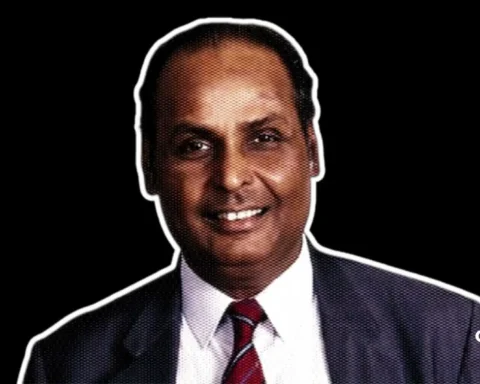In the late 19th century, when India was still under colonial rule, science was a field dominated by the West. The laboratories that produced great discoveries were oceans away from Bengal, and the Indian mind was often underestimated in matters of research. Yet into this world was born Prafulla Chandra Ray in 1861, a man whose relentless curiosity and perseverance would change the narrative of the coming future. His early life in a small village in present-day Bangladesh was marked by his curiosity and the stubbornness to be something. Prafulla Chandra Ray suffered from ill health during his childhood, particularly a prolonged bout of dysentery, which left him weak and delayed his schooling.
This period of illness was significant in his life because it gave him time to read extensively, which sparked his lifelong love for learning and science. What set him apart early on was his refusal to accept knowledge at face value. Even as a student, Ray didn’t bind his learning to books; rather, he questioned the unquestionable and thought about the unthinkable- something that not all children do. This restless search for truth became the foundation for his journey toward becoming the “Father of Modern Chemistry in India.”
Table of Contents
Prafulla Chandra Ray: Crossing Oceans in the Mind and Life
At the time, Indian students pursuing higher education abroad were rare, and those venturing into scientific disciplines, rarer still. After excelling in his early studies, Ray earned a scholarship to study at the University of Edinburgh. The transition from rural Bengal to a European university was a leap across worlds.
In Edinburgh, Ray was exposed to cutting-edge research and a scientific culture that valued rigorous experimentation. But this wasn’t merely a period of learning; it was also a time of internal resolve. He knew that the India he would return to lacked the facilities, resources, and infrastructure for high-level research. Yet he vowed to bring the same spirit of inquiry back home, determined to prove that world-class science could be done on Indian soil.
The Laboratory Without Walls
After returning from Edinburgh in 1888 with a doctorate in chemistry, Prafulla Chandra Ray joined Presidency College in Calcutta as an assistant professor, where he began pioneering research in inorganic chemistry, particularly on nitrites and hyponitrites of metals. His laboratory soon became a hub for budding Indian scientists, as Ray’s insistence on meticulous experimentation and indigenous innovation inspired an entire generation.
Recognizing the need for self-reliance in the scientific industry, he founded Bengal Chemical and Pharmaceutical Works in 1901, India’s first pharmaceutical company, which produced essential chemicals and medicines previously imported from abroad. He published over a hundred papers in international journals. His scholarly work also extended to history, with his two-volume History of Hindu Chemistry shedding light on India’s ancient scientific heritage.

The Bengal School of Chemistry
Ray’s most significant breakthrough came in 1896 when he successfully synthesized a new chemical compound: mercurous nitrite. It demonstrated that original research could be conducted in India and that discoveries could emerge from laboratories in Calcutta just as much as from Cambridge or Berlin.
His work attracted attention internationally, but perhaps more importantly, it inspired Indian students to see science as a field in which they could actively contribute rather than just consume. Over time, Ray and his colleagues nurtured what became informally known as the “Bengal School of Chemistry”.
The Teacher Who Lit Fires
If one asked his students what made Ray extraordinary, they would not only point to his research but to his teaching. He treated his classroom like a museum of ideas. Rather than merely explaining formulas, he dissected the thinking behind them. He encouraged students to read beyond their syllabus, to attempt experiments on their own, and to question even the most accepted theories if evidence pointed otherwise.
Many of his students went on to become prominent scientists, professors, and industrialists, carrying forward his influence. In this sense, his bequest is not confined to the discoveries he made, but to the generations of minds he sharpened.
Prafulla Chandra Ray: The Scholar-Historian
Acharya Prafulla Chandra Ray’s curiosity surpassed chemistry into the history of science. He was deeply interested in ancient Indian contributions to the field, researching and documenting the achievements of scholars from centuries past. His two-volume work, “A History of Hindu Chemistry,” was a pioneering study that revealed how Indian civilization had developed sophisticated chemical knowledge long before the colonial era.
This historical research was an intellectual act of reclaiming dignity for Indian science. By showing that India had its own legacy of experimentation and innovation, Ray challenged the colonial narrative that saw Western science as the only true science.
Humility in Greatness
Despite his achievements, Ray lived simply, almost austerely. He rejected offers of wealth and preferred to spend his money supporting students, funding scholarships, and building laboratories. His belief in service over personal gain earned him the affectionate title of “Acharya,” meaning “teacher” or “master.”
Even after retiring from formal academic positions, he continued to guide students and conduct research. His humility made him approachable, and his insistence on truth and integrity set a moral as well as intellectual standard.
The Birth of Modern Chemistry in India
Prafulla Chandra Ray is called the Father of Modern Chemistry in India, not because he was the first to study the subject, but because he transformed it into a living, breathing discipline rooted in Indian soil. The Government records of that time mention him as a “Revolutionary in the garb of a Scientist.”
As the Wikipedia page says, in 1922, he donated money to establish the Nagarjuna Prize to be awarded for the best work in chemistry. In 1937, another award, named after Ashutosh Mukherjee, to be awarded for the best work in zoology or botany, was established from his donation. His life’s work bridged the gap between laboratory research and national development, ensuring that chemistry would not be an imported curiosity but a homegrown strength.
A Legacy for the Global Indian Community That Travels Beyond Borders
For the global Indian community, Ray’s life carries an especially resonant message. His journey, from a quiet village in Bengal to the laboratories of Edinburgh and back to a fledgling scientific landscape at home, mirrors the aspirations and dilemmas of the Indian diaspora today.
In an age when global Indians across continents lead research institutions, build companies, and power global innovation ecosystems, Ray’s legacy serves as both anchor and compass. He reminds the global Indian community that excellence achieved abroad can become a bridge, not a boundary. His insistence on nurturing talent, building indigenous capability, and reclaiming India’s scientific dignity speaks directly to the millions of Indians who straddle two worlds.
For them, Ray is not only a historical figure but a continuing inspiration, proof that knowledge, when carried with purpose, can travel across oceans and still take root in the soil of one’s origins. His story invites the global Indian community to see their global success not as a departure from India’s scientific journey, but as a continuation of the path he began to carve more than a century ago.
Conclusion
Today, Indian scientists work in state-of-the-art laboratories, publish in leading journals, and contribute to global discoveries, realities that trace their lineage back to Ray’s vision. His biography is a reminder that the foundation of modern Indian science was built not by chance, but by deliberate, tireless effort in the face of scarcity and skepticism.
In a time when the nation was yet to imagine itself as independent, Prafulla Chandra Ray imagined an India where science belonged to its people and then set about making that dream real.

FAQs
What is Prafulla Chandra Ray known for?
He is known for being a pioneering Indian chemist, educator, and entrepreneur who made significant contributions to chemical research.
Which significant chemical discovery did Prafulla Chandra Ray contribute to?
He discovered mercurous nitrite, a previously unknown compound, in 1896.
How was Prafulla in his study?
Despite early health issues that interrupted his schooling, he developed into an exceptional student with a strong passion for science, excelling in chemistry both in India and at the University of Edinburgh.
Which established manufacturing unit is known as Prafulla Chandra Ray?
Bengal Chemical & Pharmaceutical Works Ltd., founded by him in 1901, is the manufacturing unit most associated with his name.









